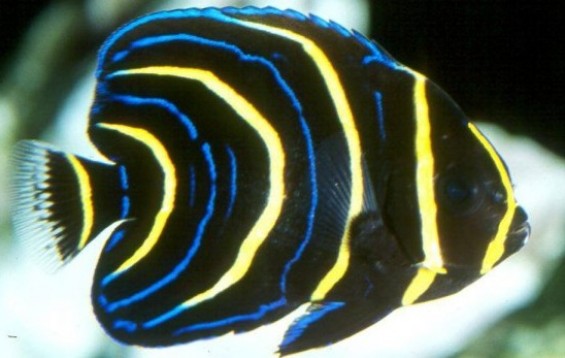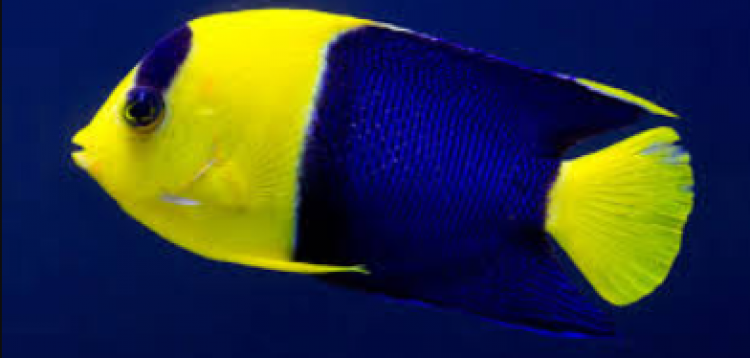- Name:
Cortez Angelfish
- Family: Pomacanthidae
- Species: Angel Large
- Scientific Name: Pomacanthus zonipectus


General info about Cortez Angelfish
The coloration of the Cortez Angelfish varies markedly from juvenile to adult. The juvenile stage is black with yellow and blue semi-circular striping radiating from the tail. As an adult, the Cortez Angelfish is blue, with a pale, speckled mid-section and a swipe of vertical yellow just behind the head. The long, dorsal fin is a green-blue while the head is blue with yet another yellow vertical swipe just behind the eye. The Cortez Angelfish requires a large tank and should be the only angelfish in the tank, even as juveniles. Not a good candidate for a reef tank, the Cortez Angelfish eat sponges, and will also consume stony and soft corals (sessile invertebrates) and clam mantles.
Cortez Angelfish Diet & Nutrition
This angelfish primarily feeds on sponges but is also supplemented by tunicates, algae, bryozoans, hydroids and eggs. In tank conditions, it should be provided with a diet of Spirulina, marine algae, shrimp and other meaty items, and high-quality angelfish preparations containing sponges.
Breeding & Spawning Cortez Angelfish
Cortez angelfish often form pairs and have been observed spawning seasonally in similar manner; gametes are released in unison toward the surface, planktonic eggs floating with the current.
Common Diseases with Cortez Angelfish
Cortez angelfish have a high tolerance for parasites and diseases in their immediate surroundings which make Cortez angelfish very sturdy fish to keep as pets. If not kept in tanks with optimum condition, they are susceptible to the common saltwater diseases such as Angelfish Virus, White Spot Disease, Velvet Disease, and Head and lateral line erosion (HLLE).
Cortez Angelfish Origin
The Cortez angelfish is widely distributed in the eastern Pacific region. It ranges from the northern Gulf of California (from Puerto Peñasco, Mexico) in the north, to Peru in the south.
Caution with Cortez Angelfish
These angels are curious and friendly by nature. It has a tendency to become aggressive with other members of their own kind, other angels and other similarly marked fishes when provoked. They are solitary and fiercely territorial on the reef as adults.
Acclimating Cortez Angelfish
When adding into new tanks, this species should be run through a freshwater bath to remove parasites and microbes. The tanks should have plenty of rock works for their hiding place when threatened.
Original Detail
| Name | Species | Family | Scientific Name | More Detail | Added by |
|---|---|---|---|---|---|
| Cortez Angelfish | Angel Large | Pomacanthidae | Pomacanthus zonipectus | The coloration of the Cortez Angelfish varies markedly from juvenile to adult. The juvenile stage is black with yellow and blue semi-circular striping radiating from the tail. As an adult, the Cortez Angelfish is blue, with a pale, speckled mid-section and a swipe of vertical yellow just behind the head. The long, dorsal fin is a green-blue while the head is blue with yet another yellow vertical swipe just behind the eye. The Cortez Angelfish requires a large tank and should be the only angelfish in the tank, even as juveniles. Not a good candidate for a reef tank, the Cortez Angelfish eat sponges, and will also consume stony and soft corals (sessile invertebrates) and clam mantles. |
PalaciosAn |
Changed by users
| Submitted Date | Submitted By | Status | Action |
|---|


